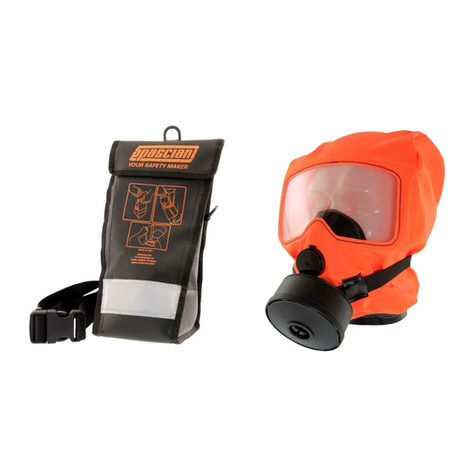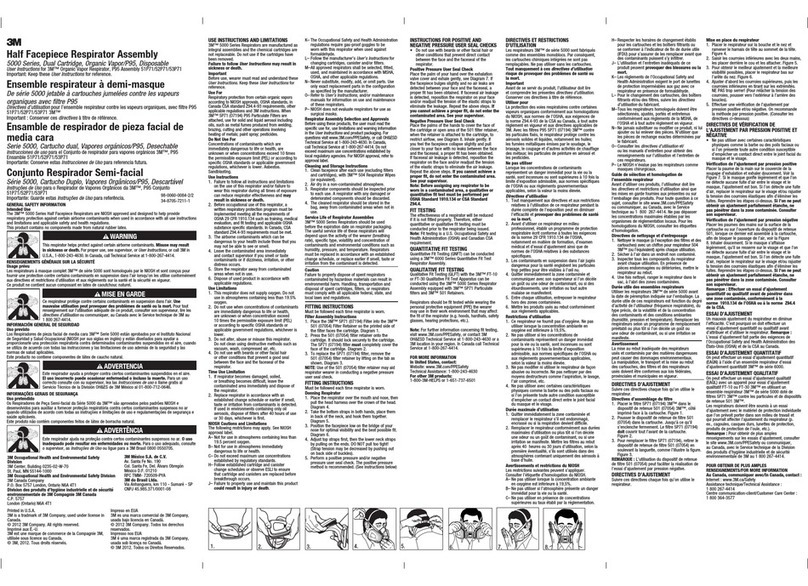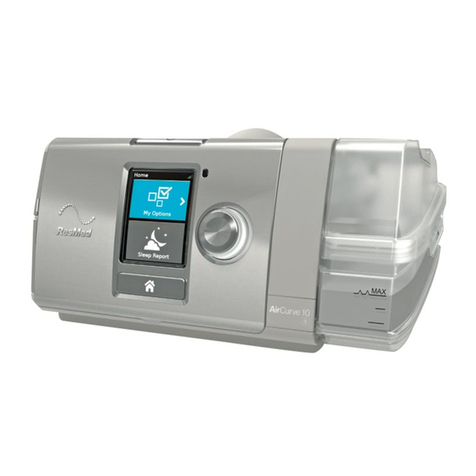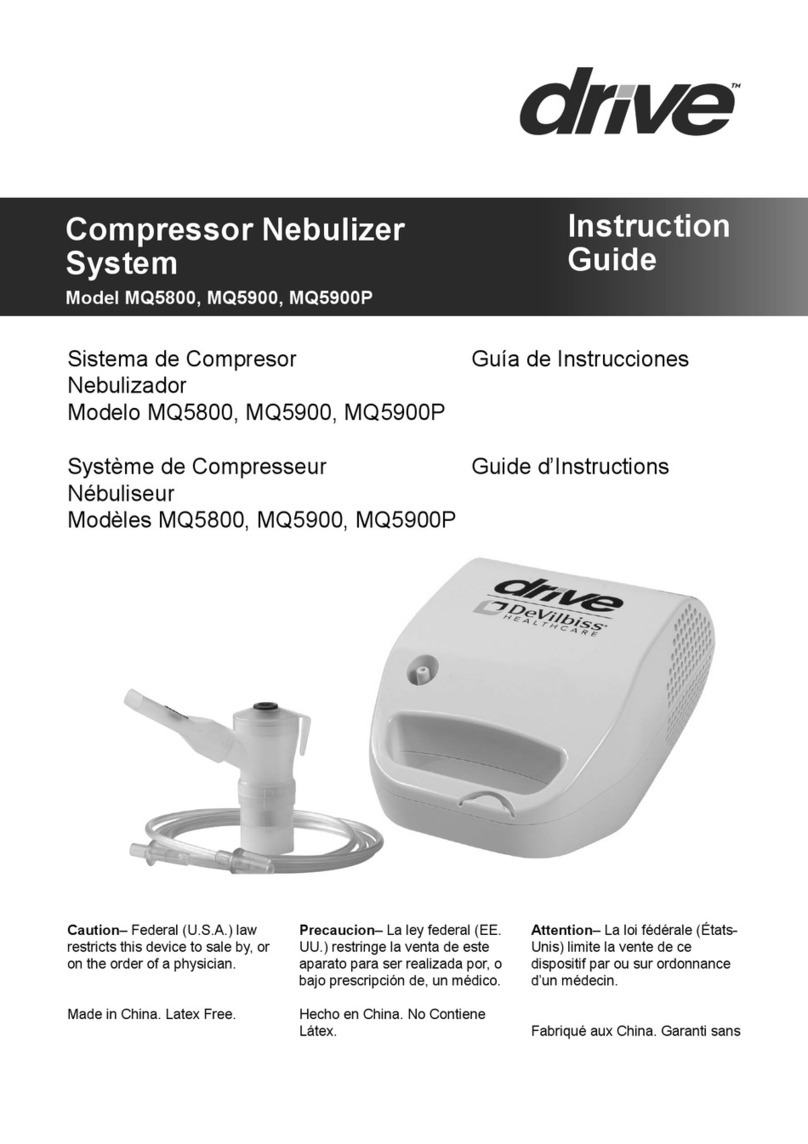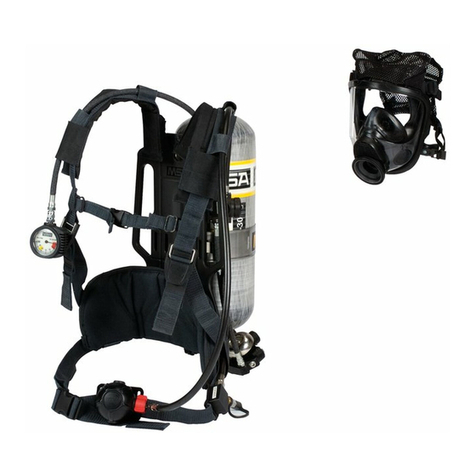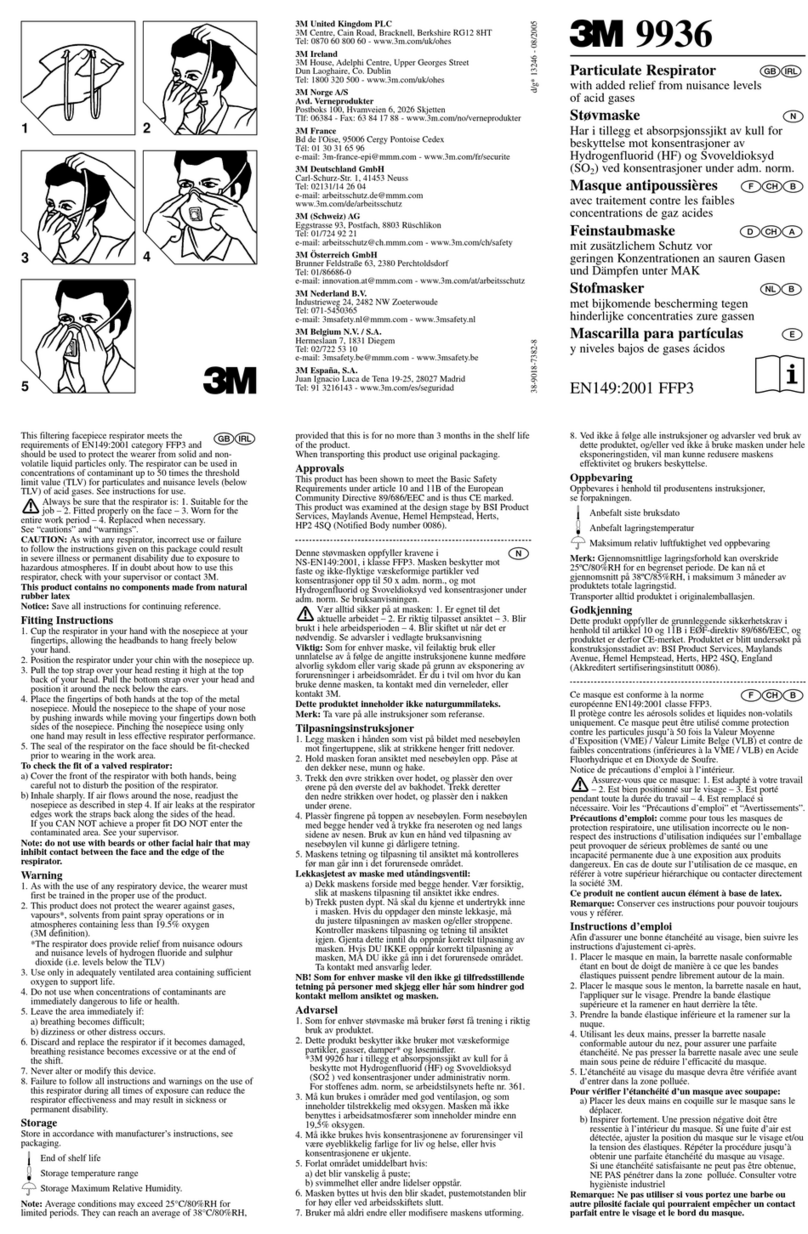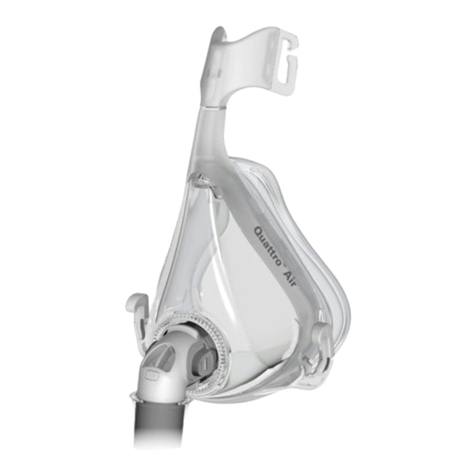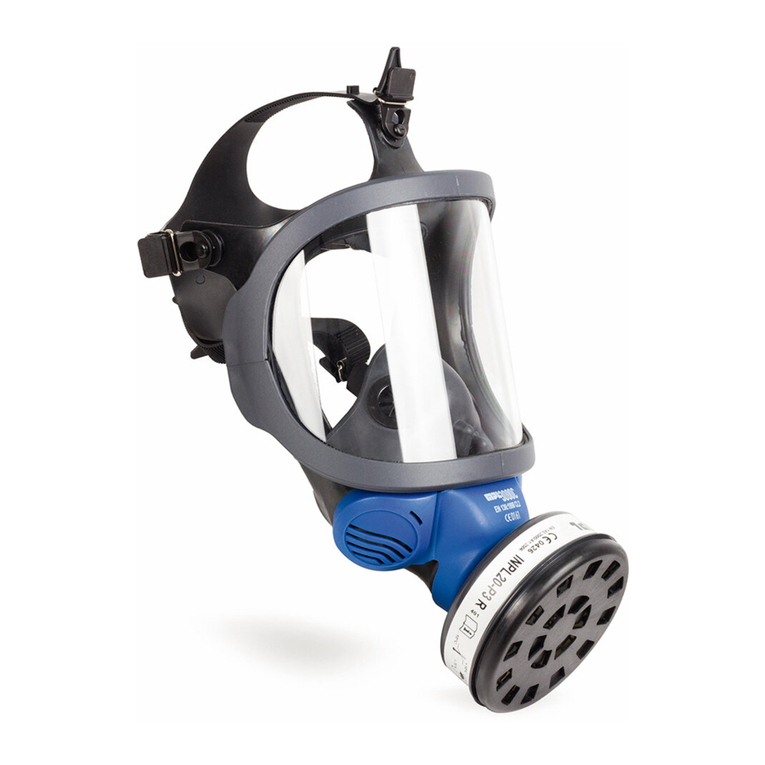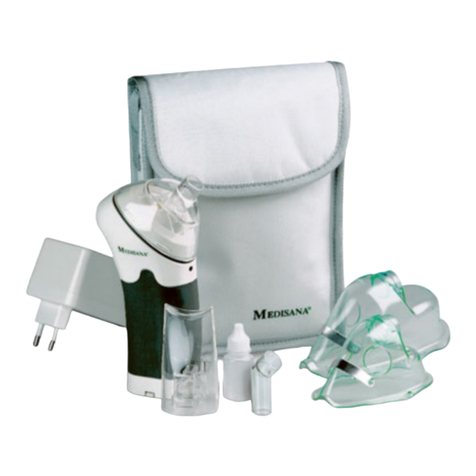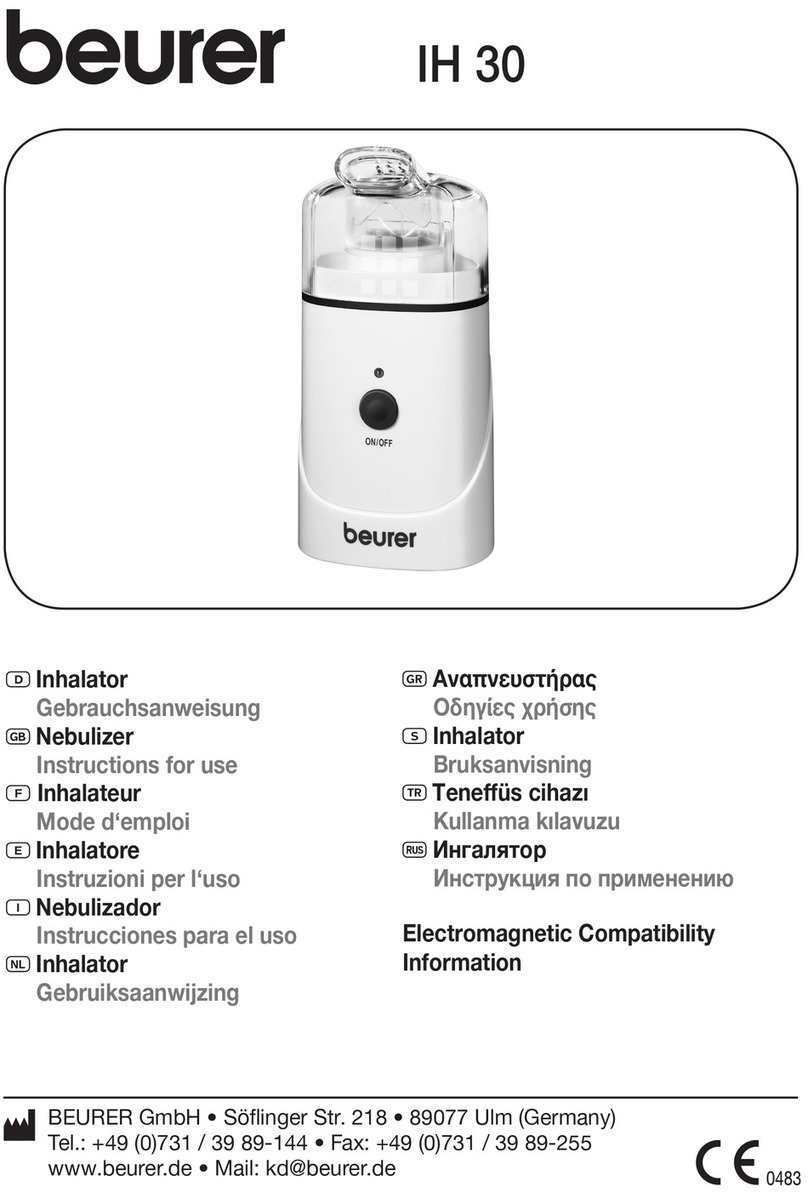Aegle F110 PLUS User manual

User Instructions
Doc ID:
PL 0004
Effective Date:
04/20/21
Revision:
0
.
USER INSTRUCTIONS CONTENT AND FORMAT
Page 1
USER INSTRUCTIONS
WARNING
This respirator can help reduce inhalation exposures to certain contaminants but cannot eliminate the risk of
contracting infection, illness, or disease. OSHA and
other government agencies have not established safe exposure
limits for these contaminants.
For additional information on this respirator, please call us at +1-713-364-2363.
IMPORTANT
Prior to use, wearer must read and understand the User Instructions. Keep this document for future reference.
INTENDED USE
The N95 Particulate respirator is intended for use as an air-
purifying respirator from particles such as those from
sanding, grinding, sweeping, sawing, bagging, or processing minerals, co
al, iron ore, flour, metal, wood, pollen, and
certain other substances. Liquid or non-oil-based particles from sprays that do not emit oil aerosols or vapors.
DO NOT USE PRODUCT FOR Gases and vapors, oil aerosols, asbestos, arsenic, cadmium, lead, 4,4'-
met
hylenedianiline (MDA) or sandblasting; concentrations that exceed 10 times the PEL / OEL, specific OSHA
standards, or applicable government regulations, whichever is lower. This respirator does not supply oxygen.
USE INSTRUCTIONS
1. Failure to follow all
instructions and limitations on the use of this respirator and/or failure to wear this
respirator during all times of exposure to contaminates can reduce respirator effectiveness and may result
in illness, injury, or death.
2. Leave the contaminated area imme
diately and contact supervisor If dizziness, Irritation, or other distress
occurs.
3.
Before occupational use of this respirator, a written respiratory protection program must be implemented
meeting all local government requirements. In the United States, emp
loyers must comply with of OSHA 29
CFR 1910.134, which includes medical evaluation, training, and fit testing, and where applicable, OSHA
substance specific standards.
4. Inspect respirator before each use to ensure that It is in good operating condition. Ex
amine all the respirator
parts for signs of damage Including the two headbands, strap welds, nose-bar, and nose-foam. The respirator
should be disposed of immediately upon observation of damaged or missing parts. Filtering respirators are
to be inspected p
rior to each use to assure there are no holes in the breathing zone and no damage has
occurred. Enlarged holes resulting from ripped or torn filter material around strap welds are considered
damage; immediately replace respirator if damaged.
5. If the respir
ator becomes damaged, or excessive clogging of the respirator makes breathing difficult, replace
it with a new one and dispose of used product in accordance with applicable regulations.
6. When not in use, store the respirator in original packaging in a temperature & humidity-controlled area
(-20°C to 38°C and up to 80% RH).
USE LIMITATIONS
1. This respirator does not supply oxygen. Do not use in atmospheres containing less than 19.5% oxygen.
2. DO NOT use in atmospheres containing oil aerosols, or for protection against gases or vapors.
3. DO NOT use for sandblasting, paint-spraying or asbestos remediation operations.
4.
DO NOT use when concentrations of contaminants are immediately dangerous to life and health, are
unknown, or when concentrations exceed 10 t
imes the permissible exposure limit (PEL), or according to
specific OSHA standards or applicable government regulations, whichever is lower.
5. DO NOT alter, abuse, or misuse this respirator.
6. DO NOT use with beards, other facial hair, or other conditions that
may prevent a good seal between the
face and the sealing surface of the respirator.
7.
Respirators can help protect your lungs against certain airborne contaminants, however, they will not
prevent entry through other routes such as the skin, which would requ
ire additional personal protective
equipment (PPE).
8.
This respirator is designed for workplace/occupational use by adults who are trained in their use and
limitations. This respirator is not designed to be used by children.
9. Individuals with a compromised re
spiratory system, such as asthma or emphysema, should consult a
physician and must complete a medical evaluation prior to use.
TIME USE LIMITATION
Single Use - Single User. Do not share respirators. If respirator becomes damaged, soiled, or breathing beco
mes
difficult, leave the area immediately and replace the respirator. Use within one (1) year of Date of Manufacture.

User Instructions
Doc ID:
PL 0004
Effective Date:
04/20/21
Revision:
0
.
Page 2
FITTING INSTRUCTIONS
Following instructions must be followed each time respirator is worn.
Aegle PPE 1 LLC
12227A FM 529 Rd
Houston, TX 77041
+1-713-364-2363
This respirator is approved only in the following configuration:
TC- Protection1Respirator Cautions and Limitations2
F100
84A-9353 N95 X ABCJMNOP
1.
PROTECTION
2.
CAUTIONS AND LIMITATIONS
A. Not for use in atmospheres containing less than 19.5 percent oxygen.
B. Not for use in atmospheres immediately dangerous to life or health.
C. Do not exceed maximum use concentrations established by regulatory standards.
J. Failure to properly use and maintain this product could result in injury or death.
M. All approved respirators shall be selected, fitted, used, and maintained in accordance with MSHA,
OSHA, and other applicable regulations.
N. Never substitute, modify, add, or omit parts. Use only exact replacement parts in the configuration
as specified by the manufacturer.
O. Refer to user’s instructions, and/or maintenance manuals for information on use and maintenance
of these respirators.
P. NIOSH does not evaluate respirators for use as surgical respirators.
N95-Particulate Filter (95% filter efficiency level) effective against particulate aerosols
free of oil; time use restrictions may apply.
Step 1:
Place the respirator in the palm of your hand with the nose clip closest to your fingers
and the respirator opening facing you. Starting with the lower headband first, pull
each headband up and over your hand, one at a time.
Step 2:
Position the respirator on your face with the bottom of the respirator under your chin.
Pull the bottom headband over your head and bring it around your neck, below your
ears. Then, pull the top strap up and rest it high at the top of your head.
Step 3:
Place your fingertips from both hands at the top of the metal nosepiece. Using two
hands, mold the nose area to the shape of your nose by pushing inward while moving
your fingertips down both sides of the nosepiece. WARNING: Pinching the nosepiece
using one hand may result in an improper fit and less effective respirator performance.
Step 4:
Perform a respirator-to-face seal check before each wearing by placing both hands
completely over the respirator, careful as to not disturb its position, then exhale. If air
leaks around the nose, re-adjust the noseclip as described in step 3. If air leaks at the
edges around your face, work the straps back along the sides of your head.
WARNING: If you CANNOT achieve a proper seal, DO NOT enter a contaminated area.
This manual suits for next models
1
Table of contents
